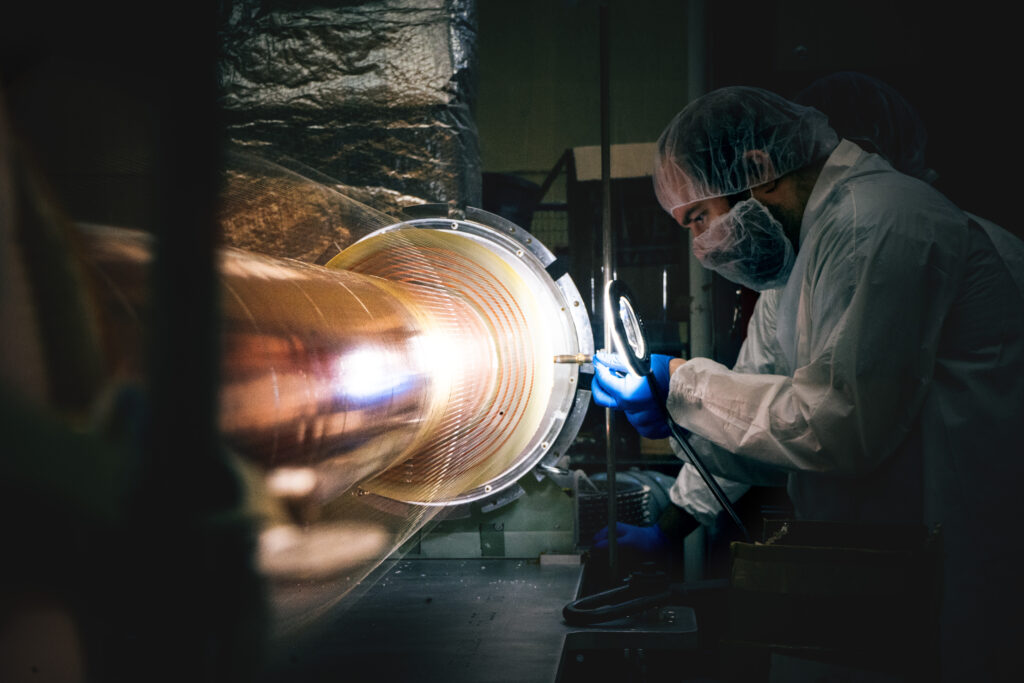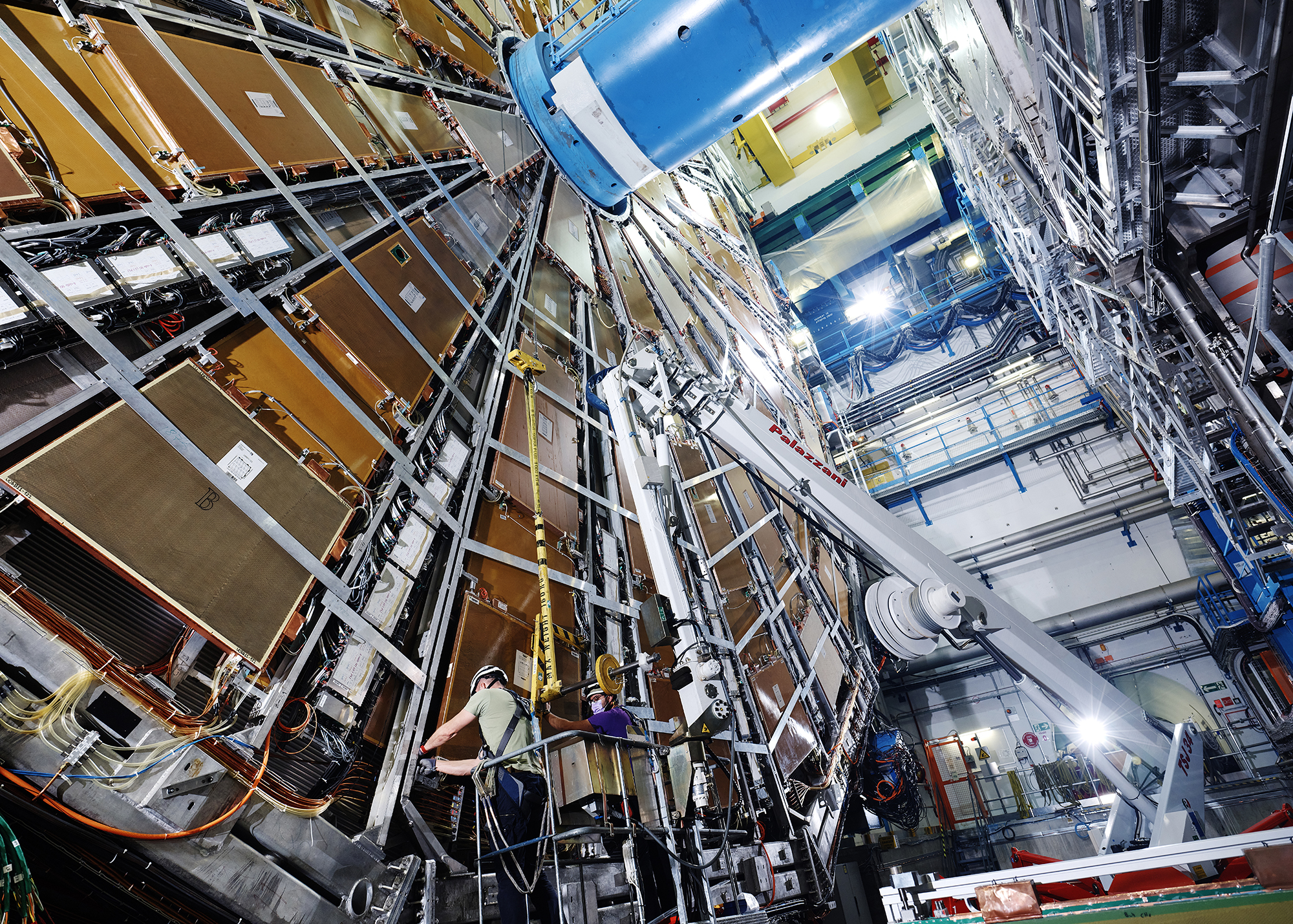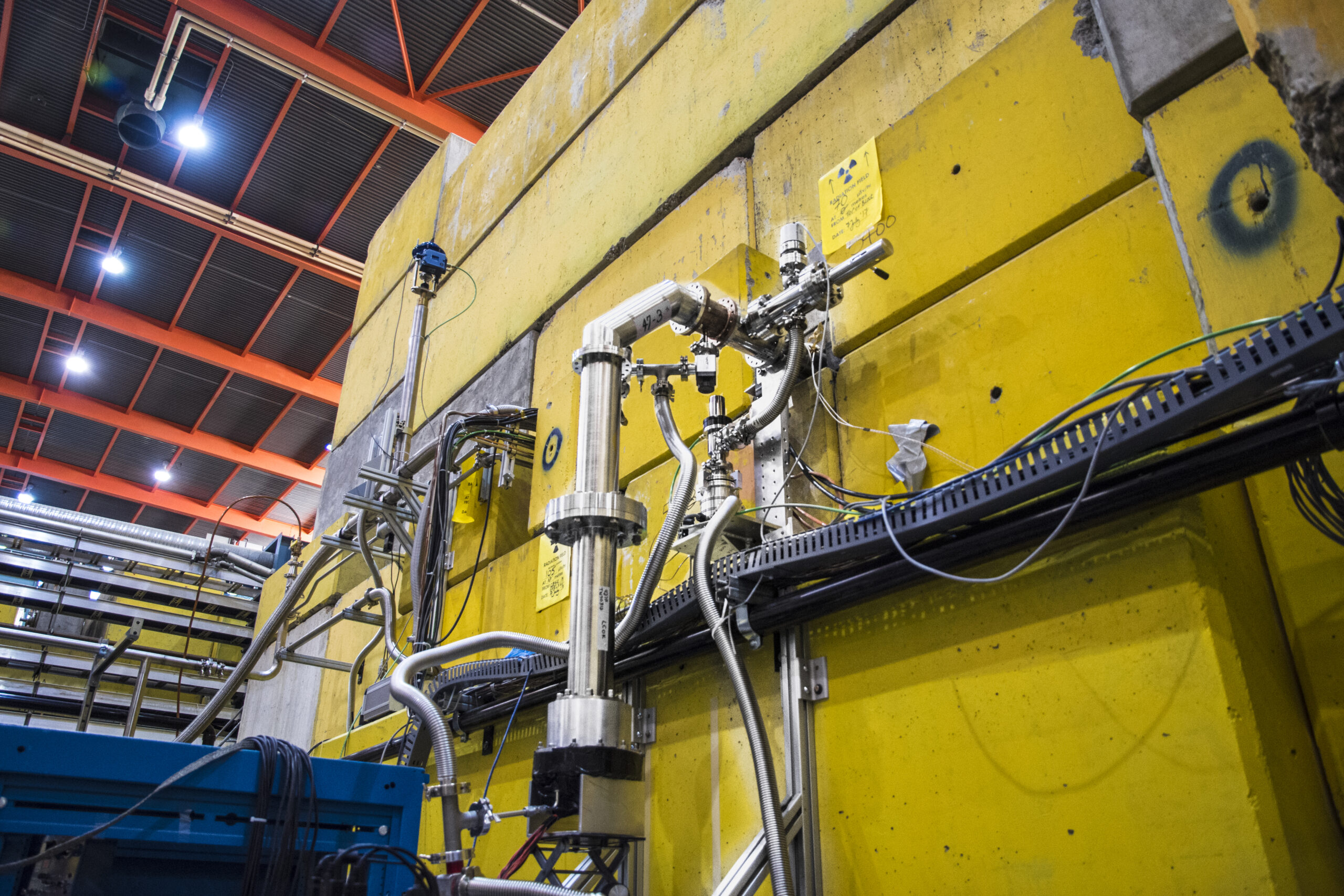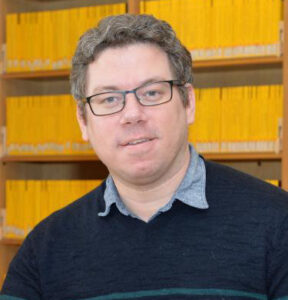
Particle Physics
Particle physics research seeks to addresses some of the most compelling questions in science; the driving motivation behind experimental particle physics is the desire to uncover the true nature of the particles that make up matter and the fundamental forces that govern their behaviour and interactions.
Our current best framework for this knowledge, the Standard Model of Particle Physics, is believed to be an effective theory, but it is widely held that a deeper underlying theory is reachable in the next generation of experiments. A fully developed framework may help to answer some of the most important and persistent questions about our world, such as:
- “What is the nature of dark matter?”
- “Why is there more matter than anti-matter in the universe?”
- “Why is the Higgs boson so light, and what more can we uncover from the weakest interacting particles, the neutrinos?”
At TRIUMF, we are engaged in five focus experiments, each embedded in international collaborations. TRIUMF has been engaged in all phases of each experiment, from design and conception to construction, operations and data analysis. Our focus experiments are currently:
- ATLAS (CERN)
- Hyper-Kamiokande and T2K (J-PARC)
- ALPHA, ALPHA-g, and HAICU (CERN)
- The TRIUMF UltraCold Advanced Neutron source (TRIUMF)
- SuperCDMS (SNOLAB).
Upcoming and future projects:
Learn more about our involvement in all of these experiments and more at the group links below.
Research feature

ALPHA physicists observe the first gravitational free-fall of antimatter
Using a built-at-TRIUMF antimatter gravity detector, an international research team has observed for the very first time the effect of gravity on antimatter. As was (mostly) widely expected, antimatter falls downwards. Read more.
Research Initiatives
High Energy Frontier
For over 20 years, TRIUMF’s ATLAS group has led Canada’s participation in the largest and greatest science experiment of all time: the hunt for the Higgs boson.
The monumental discovery of the Higgs boson in 2012 by the ATLAS and CMS experiments at the Large Hadron Collider marked the beginning of a new era in science. The Higgs boson has become both a corner stone of the highly successful Standard Model and, on the other hand, a portal to new, potentially ground-breaking physics – via research at the high-energy frontier.

Neutrinos and Dark Matter
Neutrinos are ghostly and nearly completely non-interactive
particles produced in vast quanities in cosmological events like star
explosions. Dark matter comprises a significant portion of all mass in
the universe, but it cannot be detected. Both play a crucial role in
cosmology, astrophysics, and our understanding of matter in our Universe.
TRIUMF researchers, engineers, and students play a critical role in collaborative global research effort to elucidate the nature and role of both dark matter and neutrinos.

Precision Tests of Fundamental Interactions
The Standard Model (SM) agrees with most of what has been observed in our Universe, but is widely believed to be only an approximation of a more basic and fundamental model whose properties are not yet known. Increasingly precise measurements of Standard Model predictions may continue to re-affirm its validity, but may also identify where it falls short.















